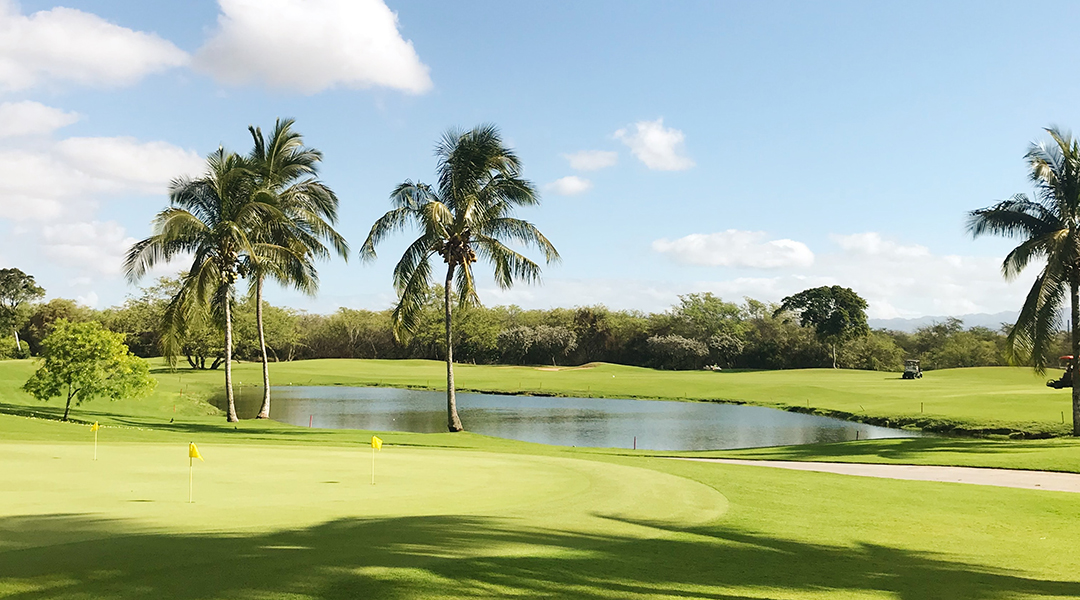As natural habitats are increasingly altered for human use, how animals adapt to man-made landscapes becomes a crucial question. New research recently published in the journal Ecology and Evolution finds that golf courses are providing an oasis for alligators — but are also changing their behaviors in important ways.
An ever-changing landscape
Golf courses are an important but understudied human-altered landscape. While, of course, created for human purposes, their bodies of water and clumps of trees could potentially provide benefits to wildlife, at least compared to surrounding human-dominated landscapes.
Previous research has provided some evidence for such ecological value. However, these studies looked only at the diversity and abundance of animals and plants — to truly understand the impacts of golf courses on wildlife, we need to go beyond this and look at how this novel habitat affects fundamental relationships between animals, such as relations between predators and their prey.
This was the aim of the new study conducted by Adam Rosenblatt and colleagues at the University of North Florida. “When we humans change the landscape, like by constructing a golf course, it can affect wildlife in the area both positively and negatively,” explained Rosenblatt. “We don’t know a ton about how large predators are affected by things like golf courses, so we did a study to see how alligator behaviors, specifically their feeding habits, are affected by living on a golf course.”
Rosenblatt noted that we know very little about this question. “There have been two studies looking at how large predator feeding habits change around cities, but none on golf courses that we know of,” he added.
Comparing two island populations
American alligators are one of the most abundant large predators in the southeastern United States, making them a perfect subject for this kind of study; as does the abundance of golf courses in the region, reckoned to be almost 4000 strong. As their natural habitat shrinks, alligators have become a common sight on golf courses that provide the freshwater habitat they require.
Rosenblatt and colleagues compared juvenile alligator populations on two small barrier islands off the southeast coast of Georgia, USA . They studied juvenile alligators because the researchers found them easier to catch than adults. One of the islands, Jekyll Island, contains four golf courses and attracts over a million tourists a year, where nearby Sapelo Island is closer to natural habitat, accessible only by watercraft, contains a far smaller human population, and has zero golf courses.
The researchers ascertained the diet of the alligators on both islands using the “hose Heimlich technique”, where the alligators’ stomachs were filled with water and then pressure was applied to the alligator’s flanks until the water, and any prey items inside, exited their mouth. This allowed researchers to determine the alligators’ diet without harming the animals, who were released afterwards.
Varied diets
There were distinct differences in the diet of juvenile alligators on the two islands. On the “natural” Sapelo Island, the most important prey group was crustaceans followed by insects and spiders — very few fish were eaten by these alligators. On the golf course–heavy Jekyll Island, alligators had a much more varied diet, with more fish and fewer crustaceans.
Much of this difference is likely because alligators on Jekyll Island move around less than those on Sapelo Island. Previous evidence from studies tracking alligator movements found those living on golf courses tended to spend most time in freshwater lakes where crustaceans are rare and fish are plentiful, while alligators in more natural habitats regularly moved between freshwater and marine regions where crustaceans are more common.
This suggests alligators either prefer the large ponds artificially created on golf courses, or they dislike moving around human-dominated areas. “Alligators living on golf courses change their feeding habits because they don’t move around as much and because there are different types of prey available on golf courses,” said Rosenblatt.
While further work is needed to determine the effects of these diet differences on the long-term health of alligator populations, Rosenblatt is clear this work has important conservation implications.
“If we want large predators to be able to feed in the ways they normally do, we need to make sure they have the ability to move around the landscape through habitats that are connected to each other,” he said. “If the landscape becomes fragmented, then large predators have to change their behaviors to survive.”
It would seem that golf courses could provide an unexpected oasis for alligators and other endangered animals, as their natural habitat disappears; but only if we provide a helping hand.
Reference: Adam E. Rosenblatt, et al., Golf course living leads to a diet shift for American alligators, Ecology and Evolution (2023). DOI: 10.1002/ece3.10495
Feature image credit: Jura on Unsplash

















